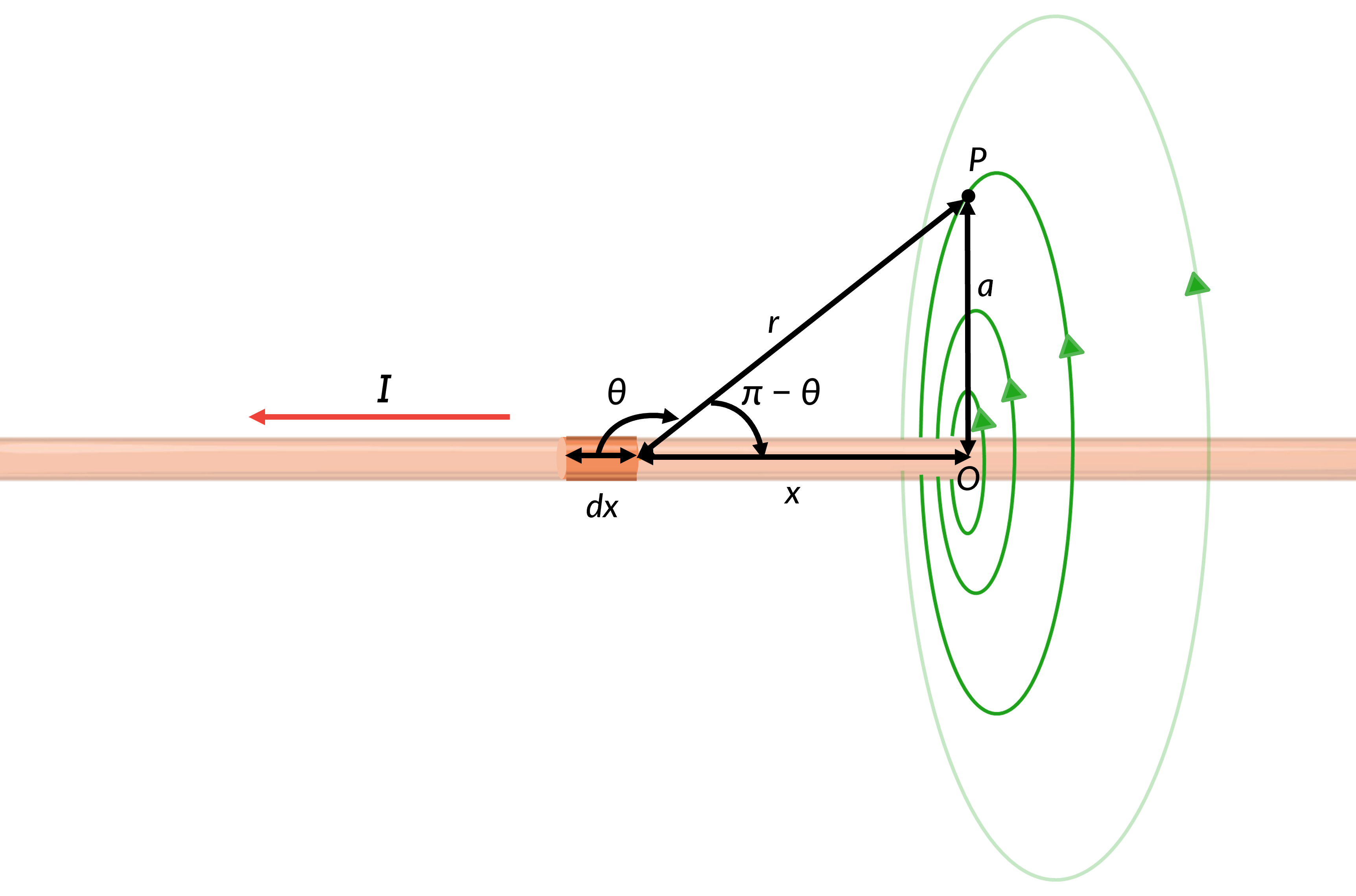29.4:
Magnetic Field Due To A Thin Straight Wire
Consider an infinitely long, thin, straight current carrying wire. The magnetic field created by the current in its proximity can be calculated using the Biot-Savart law.
To estimate the magnetic field at a point P, consider a small current element of length "dx", at a distance "x" from the origin. The length of the line joining "dx" and "P" can be estimated using the Pythagorean theorem.
The angle subtended by the current element with the line joining P can be expressed as a over r.
Substituting these terms gives the expression for the magnetic field created by the current element.
Since the wire is infinitely long, integrating the equation from zero to infinity gives the expression for the total magnetic field at P, produced by the current carrying wire.
Following the right-hand rule, if the thumb points along the current direction, then the fingers curl along the direction of the magnetic field lines. These lines are concentric around the wire, and their magnitude decreases with increasing distance, which increases the space between the field lines.
29.4:
Magnetic Field Due To A Thin Straight Wire
Consider an infinitely long straight wire carrying a current I. The magnetic field at point P at a distance a from the origin can be calculated using the Biot-Savart law.

Consider a current element dx at a distance x from the origin. The current element makes an angle θ with the line joining dx and P. Using the Pythagorus theorum to express the distance between the current element and the point, the magnetic field due to the current element at point P can be estimated using Equation 1.
The wire is symmetrical about the origin. Hence, integrating Equation 1 within the limits of zero to infinity gives the equation for the magnetic field in terms of the current and the distance of point P from the wire.
The magnetic field lines of the infinite wire are circular and centered at the wire, and they are identical at every plane perpendicular to the wire. Since the intensity of the field decreases with the distance from the wire, the spacing of the field lines also increases correspondingly with distance.
The right-hand rule gives the direction of magnetic field lines. If the thumb points along the current, the fingers wrap around the wire in the same way as the magnetic field. Therefore, the field points into the page at point P. The magnetic fields due to all the current elements have the same direction.
Suggested Reading
- OpenStax. (2019). University Physics Vol. 2. [Web version]. Retrieved from 514-516 https://openstax.org/books/university-physics-volume-2/pages/12-2-magnetic-field-due-to-a-thin-straight-wire
